Jewish
cemetery,
Münster
The Jewish cemetery on Einsteinstraße in Münster is a testimony to 200 years of Jewish-German history in Münsterland.
Continue
here
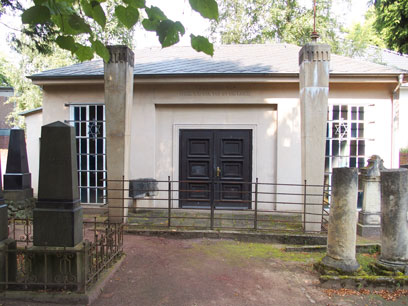
built in 1928 according
to plans by Wilhelm
Peter Strupp
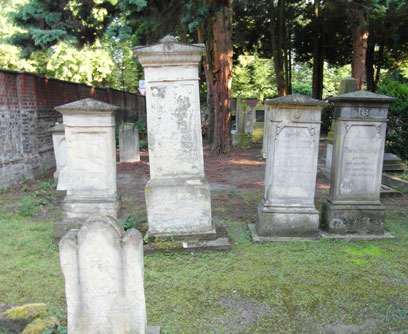
Jewish cemetery
at Einsteinstraße
House of eternity:
Place of the dead –
place of living
memories
In Judaism, a cemetery is considered “Beth Olam” – a “house of eternity”. The gravestones are not cleared away and gravesites are not passed on after a certain period of time. Jewish cemeteries are therefore precious testimonies of a Jewish history that goes back in some places in Westphalia to the Middle Ages.
There was also a Jewish community in Münster as early as the 13th century; its burial place was on the site of today’s Paulinum grammar school. It was wiped out in the plague pogroms of 1348-1350. In the 16th century, at the time of Bishop Franz von Waldeck, Jewish families could once again live in Münster, but they probably did not have their own burial place and were expelled after the bishop’s death. It was not until Münster came under the rule of France in the wake of the French Revolution and the new rights of liberty, equality and fraternity were enforced that Jews were once again allowed to settle here from 1810. This is also where the history of the cemetery on Einsteinstraße begins.
The oldest gravestone in the cemetery is that of Sophie Haindorf (née Marks), who died on 16 September 1816 aged only 25 after the birth of her daughter.
The early decades
It was already the wish of the first Jewish families who came to Münster to have their own burial place here. The early death of a child in January 1811 led to an official request to the mayor of the city to be assigned a site for the cemetery. The Christian cemeteries had also been moved outside the city gates shortly beforehand, so the choice fell on a piece of land in front of the Neutor (new gate). After lengthy political wrangling, approval finally came in July 1812.
There are only a few traces from the first five decades (1811/12-1860). According to the registers of births, deaths and marriages (as far as they have been preserved), it must have been mainly children who in the beginning were buried, occasionally also older people who had moved to Münster together with their families. But they also include young women who did not survive the birth of their child. The oldest gravestone in the cemetery is that of Sophie Haindorf (née Marks), who died on 16 September 1816 aged only 25 after the birth of her daughter. She was married to Dr. Alexander Haindorf, a doctor and lecturer in medicine. He remained a widower after his wife’s death and was buried with his wife in 1862, her memorial stone from 1816 being adopted in the design of the new grave.
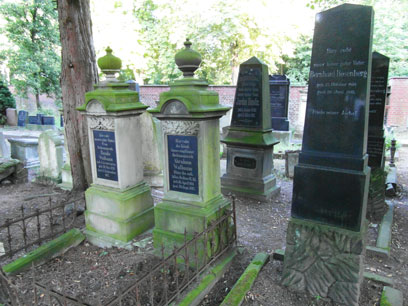
cemetery at Einsteinstraße
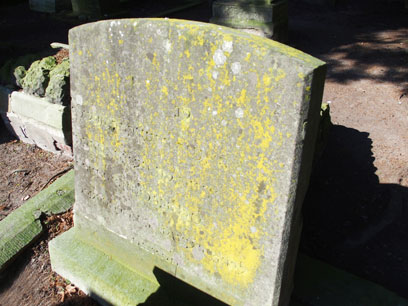
one identifiable
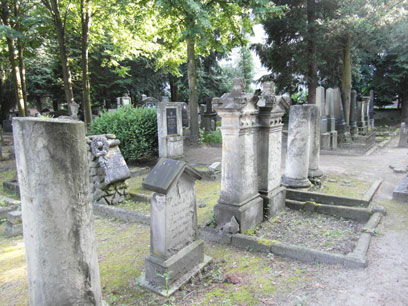
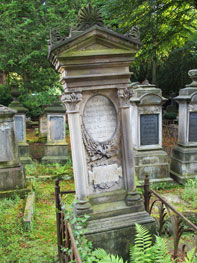
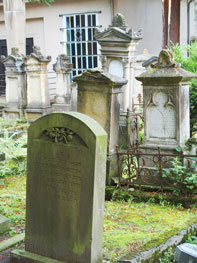
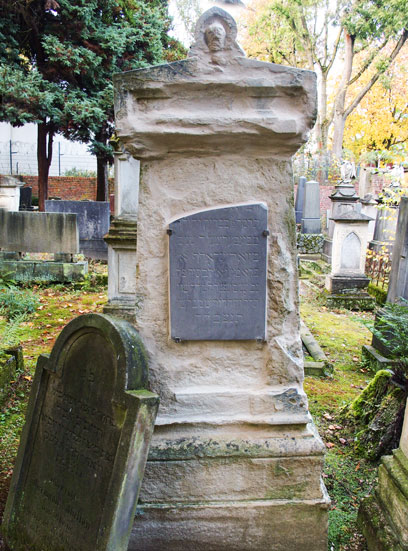
The Prussian period
The most important gravestone from the decades after 1860 is that of Abraham Sutro, who, as the so-called Land Rabbi for Westphalia from 1815 until his death in 1869, was an important political mediator between the Jewish communities of Westphalia and the Prussian government.
In 1887, the now large community around the synagogue acquired from the Episcopal Vicariate General an adjacent plot of land to the west. The numerous gravestones preserved here show that, as Germans of Jewish faith, the families were self-confident members of the city’s population during the empire. Hebrew inscriptions, which preponderate on the older stones, recede, and the design of the memorial stones comes to resemble in style and taste that of the Christian majority society, with Art Nouveau and architectural elements, and even figurative representations, being used, despite their being frowned upon in the Jewish tradition.
The numerous gravestones preserved here show that, as Germans of Jewish faith, the families were self-confident members of the city’s population during the empire.
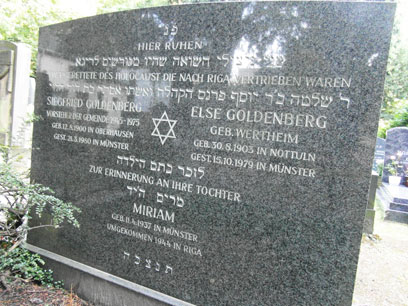
From the Third Reich to the present
According to a Gestapo report, “a number of gravestones” were knocked down in the Münster burial ground in January 1936. A bomb destroyed the oldest part of the cemetery during the Second World War. The period of Nazi rule saw the removal of numerous metal grave borders for the purpose of melting them down for the armaments industry. On 10 July 1944, the ‘Reichsinstitut für die Geschichte des neuen Deutschlands’ (Reich Institute for the History of the New Germany) demanded an inventory of the cemetery from the Münster municipal archives, since the “continued existence of Jewish cemeteries” was in doubt. The idea was obviously to expropriate or sell the cemetery, but this did not happen. Burials continued to take place until the last deportation in July 1942. A number of graves reflect the Third Reich’s policy of expulsion and finally extermination of the Jews: one spouse is still buried in Münster, but the second part of the crypt remains empty.
A few Jewish families returned to Münster after the Holocaust, and re-established the community, including especially Siegfried and Else Goldenberg, who are buried in the cemetery on Einsteinstraße. After the swift growth of the community due to the influx of Jewish families from the former Soviet Union from the 1990s onwards, it was clear that more burial space would soon be needed, and the city provided a burial ground separated from the Christian part at the municipal cemetery “Hohe Ward” in Hiltrup in 2002.
Since then, the cemetery on Einsteinstraße has only been used by members of the Jewish community who already have a gravesite there. In 2012-2015, the Seminar for the Exegesis of the Old Testament at the University of Münster’s Faculty of Catholic Theology documented the cemetery’s approximately 400 gravestones. Comprising photos, transcriptions and translations of the gravestones, as well as further information on the persons buried there, the digital documentation can be accessed at
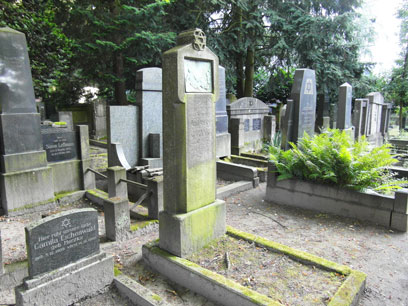
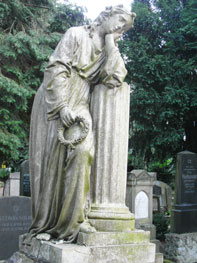
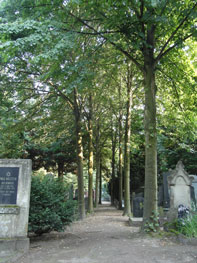
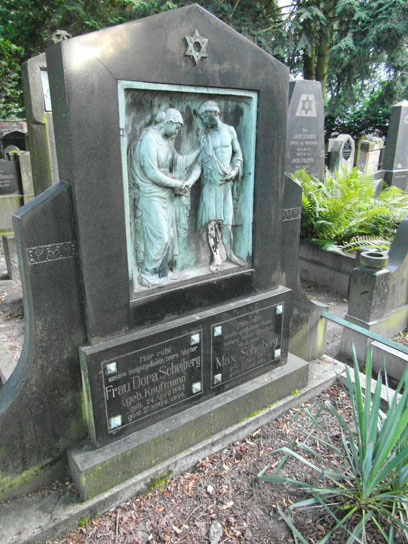
Idea and text: Photos 1-13: Ludger Hiepel MA, Faculty of Catholic Theology, University of Münster, Association for the Promotion of the Jewish Cemetery on Einsteinstraße, Münster
Photos and sources: Pictures 1-13: Ludger Hiepel MA, Faculty of Catholic Theology, University of Münster, Association for the Promotion of the Jewish Cemetery on Einsteinstraße Münster